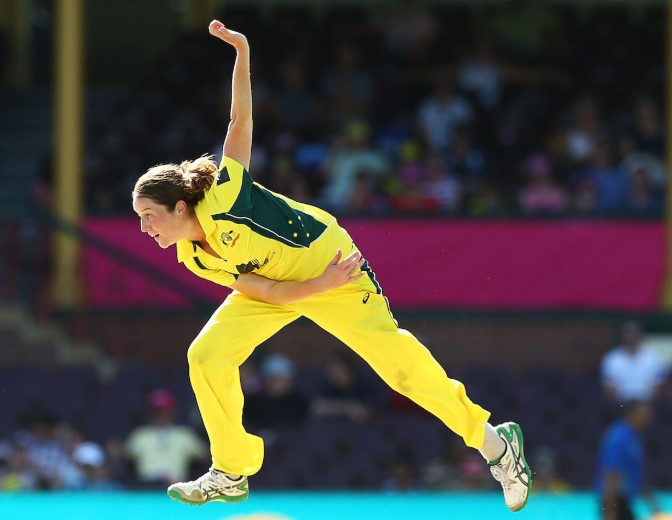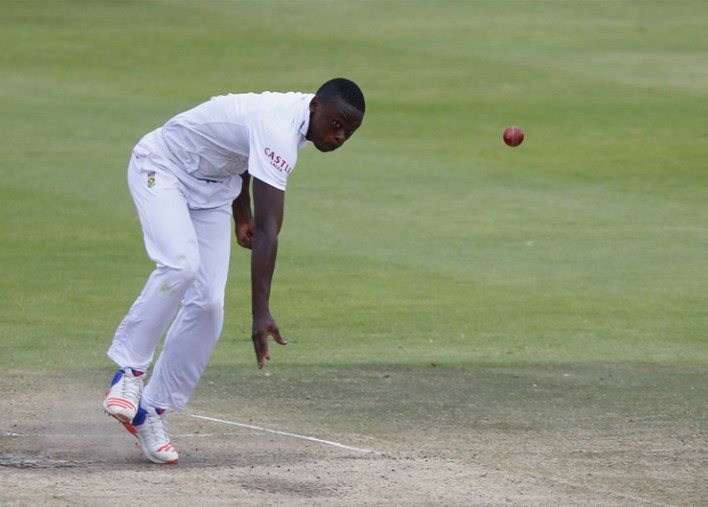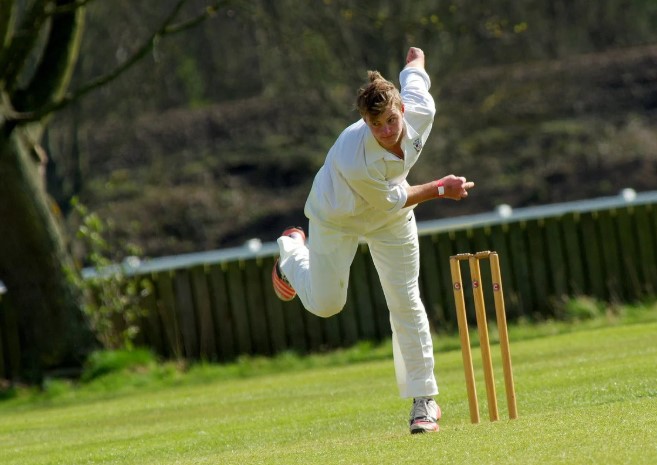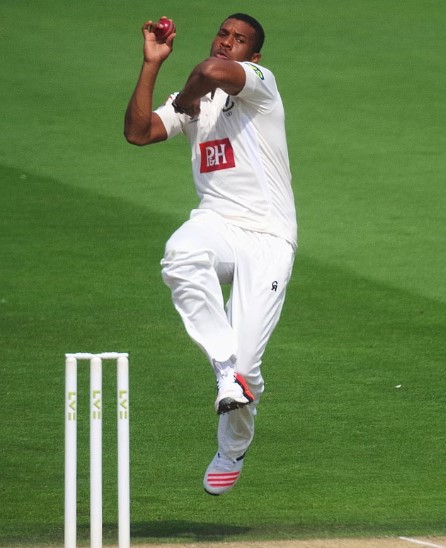Sprint: Cricket is a game rich in skill, strategy, and athleticism, with many unique aspects that contribute to the sport’s intrigue. Among these, fast bowling stands out as one of the most demanding roles. A fast bowler’s ability to deliver a ball at high speeds requires not only technical precision but also great physical conditioning. One of the most fascinating aspects of fast bowling is the bowler’s sprint down the pitch before delivering the ball.
The run-up is a crucial component of the bowling process, and its speed plays a significant role in a bowler’s performance. But why do bowlers sprint so fast before delivering the ball? In this article, we will delve into the reasons behind the sprint, examining the role of momentum, biomechanics, and the strategy involved in a bowler’s approach.
The Role Of The Run-Up In Fast Bowling

In cricket, the run-up is the sequence of steps a bowler takes before delivering the ball. For fast bowlers, the run-up is essential for building the necessary momentum to generate speed and power. The faster the bowler sprints, the more momentum they can carry into their delivery, which ultimately helps in increasing the speed of the ball.
Key Purposes Of The Run-Up:
Generating Momentum: The most important reason for a fast bowler is to build momentum. Momentum, defined as the product of mass and velocity, plays a crucial role in the speed of the ball. A fast bowler needs to generate significant forward momentum, which is then transferred into the ball during the final delivery stride.
Maximizing Power: The energy accumulated during the run-up, when channeled correctly, provides the necessary power to deliver the ball at high speed. The faster the sprint, the more energy can be transferred into the delivery.
Balancing Control and Speed: A fast bowler must find the right balance between sprinting fast enough to generate speed, yet not so fast that it compromises their control. This requires fine-tuning their run-up to achieve an optimal speed that results in both speed and accuracy.
Efficient Use of Body Mechanics: The run-up serves as a method of coordinating the bowler’s body movements. It is not just about sprinting fast but also about ensuring that the energy generated during the run-up is smoothly transferred to the upper body, especially the shoulders, wrists, and arms. The final delivery stride utilizes this kinetic energy to release the ball.
The Physics Of Speed In Fast Bowling

To understand why bowlers so fast, we must delve into the physics behind fast bowling. When a bowler delivers the ball, they convert the momentum from their sprint into the velocity of the ball. The faster the bowler’s run-up, the more kinetic energy they generate, which is then transferred into the ball’s speed.
The key to bowling at high speeds lies in kinetic energy, which is given by the formula:
KE=2/1xmv2
Where:
- KEKE is kinetic energy.
- mm is the mass of the bowler (in this case, the mass of their body and the energy generated during the sprint).
- vv is the velocity, or speed, of the bowler’s run-up.
By sprinting fast, a bowler is increasing the velocity component of the kinetic energy equation, which results in more energy being transferred into the ball.
Example Of Kinetic Energy Transfer
Let’s consider two bowlers, A and B, with the following characteristics:
| Bowler | Mass (kg) | Run-Up Speed (m/s) | Kinetic Energy (Joules) |
|---|---|---|---|
| A | 70 | 8 | 2240 |
| B | 70 | 10 | 3500 |
As shown in the table above, bowler B, who has a faster run-up speed (10 m/s), generates more kinetic energy compared to bowler A, who sprints at a slower pace (8 m/s). The increased kinetic energy means bowler B is more likely to transfer greater force to the ball during delivery, resulting in a higher ball speed.
Why Does It Affect The Speed Of The Ball?
There are several factors that contribute to the role of sprinting in the speed of the ball:
Increased Force Application: The faster a bowler sprints, the more force they can apply during the delivery. The final step in the run-up, known as the delivery stride, plays a crucial role in transferring the momentum from the run-up into the ball. This is where the bowler’s body aligns to release the ball with maximum force.

Use of the Body’s Strength: A bowler’s sprint is not just about running fast, but also about using the momentum generated by the sprint to maximize the power in their upper body, particularly in the shoulders, elbows, and wrists. This energy is converted into the speed of the ball when it is released.
Natural Rhythm: The sprinting run-up allows the bowler to get into a natural rhythm. This rhythmic movement helps them maintain balance and ensures that the delivery is timed precisely. By sprinting quickly, the bowler can establish a fluid motion, resulting in a more powerful and controlled release of the ball.
Maximizing Stride Length: Faster sprinting allows a bowler to achieve a longer stride length, increasing the efficiency of their run-up. This, in turn, helps them build more momentum before the final release of the ball. A longer stride allows the bowler to harness more energy.
The Mechanics Of A Fast Bowler’s Run-Up
The bowler’s run-up is a combination of biomechanics and coordination. Here’s how the run-up is generally executed:
Initial Steps: The bowler begins with a steady run-up, gradually accelerating to a maximum speed.
Acceleration Phase: The bowler works to increase their stride length and pace, reaching their peak speed in the latter half of the run-up.
Deceleration to Delivery: As the bowler nears the crease, they begin decelerating slightly to ensure their body aligns properly for the final delivery stride. This deceleration is essential to avoid overstriding and losing balance.
Impact Of Sprinting On Bowling Performance

Sprinting before the delivery can significantly affect a bowler’s overall performance. While speed is important, so is control. Here’s a look at how sprinting impacts the effectiveness of a fast bowler:
| Aspect | Impact of Sprinting Fast |
|---|---|
| Ball Speed | Faster sprinting leads to more momentum, resulting in a faster delivery. |
| Accuracy | A well-timed run-up contributes to better control and accuracy of the ball. |
| Endurance | Bowlers who sprint too fast may tire quicker, affecting their stamina in longer spells. |
| Rhythm | Sprinting fast helps establish a smooth rhythm, enhancing both pace and control. |
While sprinting at full speed allows for maximum power and speed, it is essential for the bowler to maintain balance and precision. Bowlers must adjust their sprinting speed based on the type of delivery they intend to bowl and the phase of the match.

The sprint before delivering the ball is not just about running fast—it is about generating momentum, maximizing power, and ensuring the bowler has the right body mechanics to deliver a ball at high speed. Fast bowlers use their sprint to build up energy that is transferred into the ball, helping them deliver with speed and precision.
By combining physical strength, technique, and rhythm, fast bowlers can achieve the explosive deliveries that make fast bowling such an exciting and dynamic aspect of cricket. Understanding the science behind the run-up highlights the incredible athleticism and skill required to bowl at top speeds, and it is a testament to the physical demands placed on fast bowlers at the highest level of the game.
